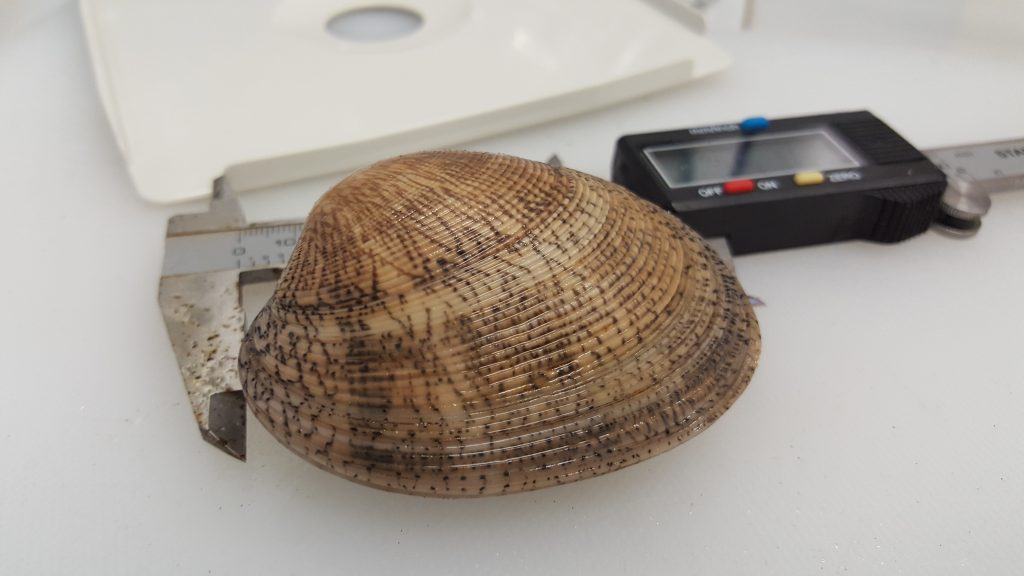As part of National Science Week 2019, we are highlighting some of the high-impact research being carried out by AINSE scholars. In our Archaeology, Geoscience and Environmental Sciences research theme, Griffith University student and AINSE PGRA scholar Kaitlyn O’Mara is investigating how aquatic organisms accumulate and react to heavy metal contamination.

Uptake and assimilation of cadmium, manganese and zinc by clams, prawns and fish
Kaitlyn O’Mara, Michele Burford, Jon Olley, Brian Fry & Tom Cresswell
Over 80% of Australia’s population live within 50km of the coast. With cities densely aggregated around estuaries and coastal bays, these environments are often degraded by heavy metals and other contaminants.
Organism uptake and response to exposure to metals is highly varied, even between similar taxa, complicating our understanding of how organisms accumulate and respond to contamination. Our study aimed to identify primary sources for metal accumulation at different trophic levels and study their entry into, and transfer through, the estuarine food web.
“Clams are sensitive to metal uptake from a variety of sources and are identified here as an important link between contaminants in the environment and accumulation at higher trophic levels by predation.”
Radiotracers, or radioisotopes, are an effective tool as their gamma-emitting properties allow us to follow the behaviour of particular metals over time in live organisms.
We collected wild sand clams Katelysia scalarina, school prawns Metapenaeus macleayi and sand whiting Sillago ciliata, which are commercially and recreationally important estuarine species. We exposed the live animals to several sources of cadmium (Cd-109), manganese (Mn-54) and zinc (Zn-65) in the ANSTO Aquatic Ecology lab, including dissolved in seawater, attached to suspended sediment particles, and as contaminated (radiolabelled) food.

While clams accumulated cadmium, manganese and zinc from seawater, the uptake by prawns was very low, especially for cadmium (Table 1). Fish did not take up any of the metals from seawater, even after water metal concentrations were increased to higher contamination levels. Unlike clams, uptake of metal from suspended sediment by prawns and fish was also negligible.

We found diet to be the primary source of Cd-109, Mn-54 and Zn-65 accumulation in prawns and fish. The percentage of metal absorbed by an animal in a single feeding session is known as the assimilation efficiency. Interestingly, the assimilation efficiency of cadmium, manganese and zinc was much higher in school prawns (53-65%) compared to sand whiting (9-23%), suggesting that prawns would accumulate metals faster and at higher concentrations than fish.
The low assimilation efficiencies of sand whiting indicate that this species is somewhat tolerant to these metals. This is reflected in their occurrence throughout contaminated estuaries in NSW, such as Sydney Harbour. Clams are sensitive to metal uptake from a variety of sources and are identified here as an important link between contaminants in the environment and accumulation at higher trophic levels by predation.

Acknowledgements:
This work was made possible by support from AINSE in the form of a Postgraduate Research Award (PGRA). It is a continuation of Dr. Tom Cresswell’s (ANSTO) exploration into the use of radiotracers in aquatic ecology. The study was also supported by Merrin Adams (CSIRO Land and Water) and the ANSTO and Griffith University Animal Ethics Committees.
